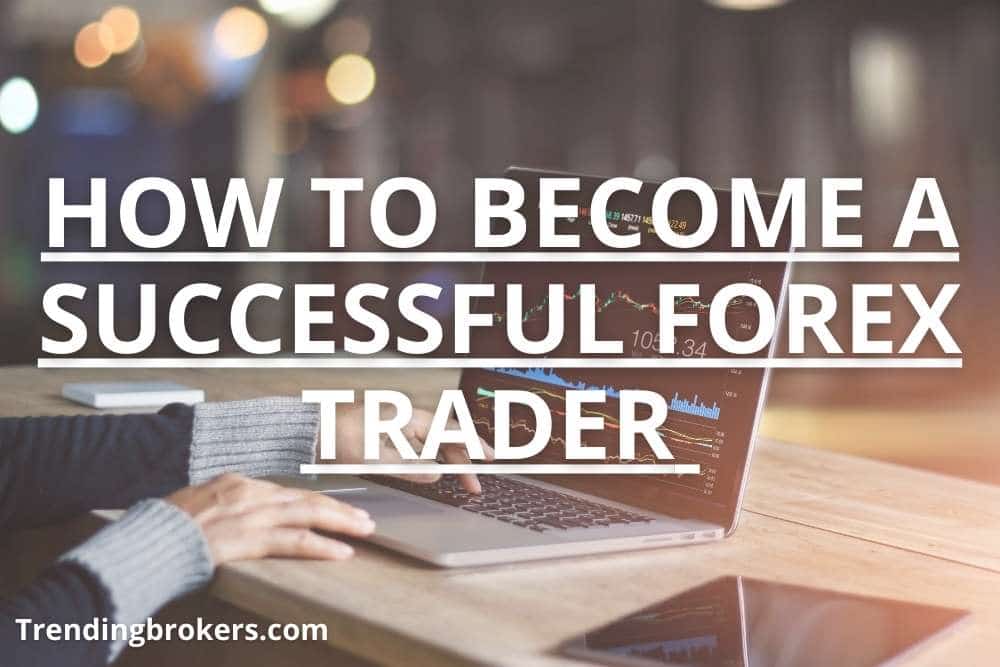Like all beasts, the successful forex trader, too, has his actions determined by a life cycle. He has to dive in headfirst, surrendering or taking a tactical retreat to do more research before plunging in again. There are a good number of trials and tests before the forex trader can be sure of his direction. Initially, a lot of demo account trading does him a power of good. Becoming a successful forex trader is a continuing process. Requisite habits are a must.
Ten rules could lay out for us the best habits informing leaders’ actions. These habits determine trader behaviour. A number of said habits are particular to the forex market. These habits are to be cultivated and nourished. These are acquired traits tailor-made for forex conditions.
Trading with a plan
A successful trader can last long only with a well-planned game plan for each trade. Without a doubt, some success may attend your planning. Still, the day of reckoning is a constant inspiration. Successful forex dealers have a particular plan of attack for each position, embracing entry point, position size, stop loss exit, and take profit exit.
Flexible with their take profits, now and then settling for less in case they consider that that is all they can obtain momentarily from the market. There are times, too, when they extend their profit targets in case market developments are going in their favour. However, they never move their stop-loss order from the original setting. That happens only in case it is in the favour’s position to lock in profits.
Foreseeing event outcomes
Similar to chess, forex trading is concerned with the best players thinking several moves ahead of competitors. Successful forex traders foresee events, mulling over the degree to which the market has/has not priced in an expected outcome. They also mull over the possible reactions in case the event matches or fails to match, expectations. Subsequently, they construct trading strategies on the basis of those alternative results.
Whereas the rest of the market is attempting to reckon how to interpret the event, checking charts and redrawing trend lines, the ambitious forex trader has a game plan already in place. He is all agog in his eagerness to trade.
Flexibility
Successful currency traders resist becoming emotionally attached to positions. They recognise that right and wrong are outside their scope. The focus is simply making money. They accommodate incoming info and news, swiftly jettisoning an open position if events head against it. They prefer not to keep waiting for price action to take them out of their trade.
Simultaneously, they are alert to new opportunities that may emerge in the market. They are in readiness to react. For such readiness, they ought to keep enough margin available for more recent positions. Moreover, they need a continuing mental model of other major pairs. They can indeed factor in fresh happenings and news. Notwithstanding their current passive status with regard to trading AUD/USD, they are well aware of the lay of the land for Aussie.
Ever-ready for trading
- Successful forex traders are always ready, at least to the extent it is possible in a market that is open 24/7. To stay on the ball, successful forex traders are ready for the following:
- Upcoming economic data releases in the next week to two weeks – to be in the know of what the previous report showed, and what is expected in the forthcoming report;
- Scheduled speakers – discovering who is speaking – financial officials or central bankers. They are mindful of what said persons have said in the past and have a good inkling as to what they may say this time;
- Central bank interest rate setting meetings and announcement times – to be in the know of when they are scheduled and the decision the market is expecting;
- Significant financial leaders conferences, like G20 meetings or monthlyEurozone finance ministers get-togethers: get a handle on if currencies are on the agenda and what actions are expected;
- Liquidity conditions: awareness of periods, like the end of the month, holidays or market closings, time of day – for instance, European close, daily fixings, or option expirations, looking to instances when the market liquidity may be affected;
- Unexpected events – use rate alerts to be on the ball with price movements outside expected ranges. They follow up alerts, check for important news, assessing possible trading opportunities.
Being technically alert
Even in case they are not pursuing a technical trading strategy themselves, successful forex traders remain aware of significant technical levels in the currency pairs they trade. For example, they know the critical Fibonacci retracement levels, where the several moving averages are substantial short and long term trend lines and impactful ongoing highs and lows.
You could be trading on the basis of price behaviour of momentum analysis. However, be sure to be au courant with vital technical levels as part and parcel of your general trading strategy.
Trading the range or going with the flow
Successful forex traders can evaluate if the market is trending or likely to stay restricted to ranges. When the market appears trending to them, they target going with the flow more often than against it.
When the short term trend is higher, they search for levels to get long at. The converse is true when the direction is down. Coterminously, they are well aware that trends pause and are oftentimes correct. Hence, they are also vigorously taking profit at important technical points even as the more significant trend unfolds.
In case the environment prefers range trending, successful forex traders can switch gears, becoming contrarians. In the latter role, they sell close to the range’s top when everyone else is buying. Conversely, there is buying close to the range’s bottom when everyone else is selling.
Equally importantly, when in range-trading mode, they come to define a final point when the range is broken. Upon that point being hit, they relax without guilt. They might even reverse direction, jumping on the breakout.
Concentrating on a handful of pairs
Many successful forex traders concentrate on just one or two currency pairs for most of their trading. Doing so permits them to get a handle on such markets with respect to price behaviour and price levels. However, it also constricts the amount of info and data that must be monitored. Most of all, they recognise various forex pairs with differing trading features, adjusting their tactics from pair to pair.
Shielding profits
There are so many market sayings on the merits of taking profits. First, there’s ‘you can’t go broke taking a profit. A favourite is ‘bulls and bears each get a seat at the table, but pigs get slaughtered.
Successful forex traders take profit at regular intervals. This is regardless it is a partial take profit – diminishing a winning position’s size. But, conversely, they are apt to square up completely, retreating a few steps post a profitable market movement. Most of all, when a trade is in the money, our traders concentrate on keeping what they have earned, not surrendering it just for the sake of a slim chance of making a bit more.
The market will do it for you if you do not take some funds off the table periodically.
Stop loss trading
Successful forex traders lose their investment now and then. But, in the long run, their success rests on the simple fact of their losses being paltry relative to their wins. The vital key is always to have a stop loss in place, preempting the remotest possibility of an insignificant losing trade becoming an account killer.
No one likes losing money. However, front rank traders can accept it as part and parcel of the costs of doing business. They can regularly own up to losses they potentially make by compressing them in the smallest size possible. You are halfway there once you have mastered this habit.
Market watching
Currencies do not trade in a vacuum. Smart traders have their hawk-eyes on diverse financial markets as a matter of course. The primary markets they concentrate on are benchmark bond yields (German, US, British and Japanese ten-year government notes), gold, oil, and prominent global stock indexes.
On the intraday basis, these markets are looked at for short term USD directional bias confirmation. For instance, in the event of the dollar moving higher, US ten year yields are rising, while the gold is plummeting. This is confirmation from other markets, the latter preferring the dollar’s move higher. Conversely, if the yields are flat or down, gold resting higher, the dollar’s move up may witness swift twilight.
On a longer-term basis, forex traders realise those other markets for important technical levels and general directional trends, just like they do the currencies.
Is medium-term forex trading more important?
Rather than concentrating on long or short term strategies, we concentrate on medium-term forex trading. We will find cogent reasons for the same here.
Short term trader/scalper
The scalper aims to open and close a trade inside minutes. Frequently, he takes advantage of minor price movements with a large quantum of leverage.
Pro: swift profit realisation, this trading type being rapid-fire.
Con: significant capital and risk requirements given the large leverage amount required to profit from such minuscule movements.
Medium-term trader
A trader generally aims at holding positions for one or several days, frequently taking advantage of meaty chance situations.
Pro: lowest capital requirements. The leverage here serves only to boost profits.
Con: fewer opportunities since these trade types are even more demanding to discover and execute.
Long term trader
This trader aims to hold positions for months/years, frequently basing decisions on long term fundamental points.
Pro: more dependable long-run profits since this is contingent upon dependable fundamental factors.
Con: significant capital requirements are covering volatile movements against any open position.
We see that both short term and long term traders need a significant amount of capital. The first type needs it to yield sufficient leverage, the other to cover volatility. Notwithstanding these traders types conspicuously present in the marketplace, they are made up of high net worth individuals, larger institutional investors or asset managers. For such reasons as these, retail traders are in all likelihood fated to succeed with the aid of a medium-term strategy.
Money management/risk management
Money management is vital to success in any marketplace. This applies, particularly to the volatile forex market. More often than not, fundamental factors may send currency rates swinging in one direction. Then, abruptly, there would be the whipsawing of rates into another direction in a matter of minutes. Therefore, it is vital to contain your downside. You just have to religiously use stop-loss points, trading only when your indicators point out great opportunities.
Conclusion
Becoming a successful forex trader calls for patience, perseverance, stamina, and a bit of trade-aptitude. In addition, you have to have enough insight to formulate your trading plan, style, strategy. A cautious medium-term strategy combined with best habits and practices for the FX marketplace set you up for good in the business. Investby is the best online forex broker that offers exceptional trading services.


